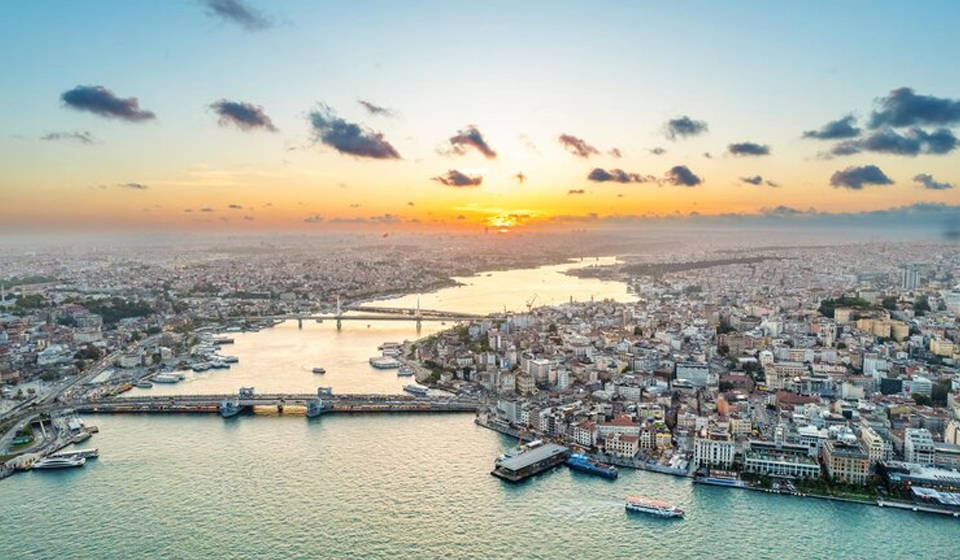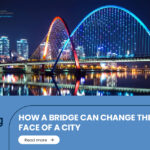
Bridges are not just structures that connect two points over a water body or a valley; they are also symbols of progress, development, and transformation. Bridges can change the face of a city by improving its quality of life, connectivity, employment, housing, and growth. In this blog, we will look at a real-life example: the Mumbai Trans Harbour Link (MTHL). Poised to be India’s longest sea bridge by December 2023, it is not just an infrastructure marvel but also a harbinger of change for Mumbai.
Quality of Life
One of the most important benefits of bridges is that they improve the quality of life of the people living in and around the city. Bridges reduce the travel time and cost between different parts of the city and provide an alternative route to avoid traffic congestion. This saves time, money, and energy, and improves the convenience and comfort of travel.
The Bandra-Worli Sea Link in Mumbai, for instance, has significantly shortened the commute between Bandra and Worli, cutting travel times from 60-90 minutes to 20-30 minutes. Additionally, it has contributed to lower fuel consumption and decreased air pollution.
Saving More Than Just Time: The MTHL isn’t just about reaching Navi Mumbai faster; It slashes travel time, reduces vehicle operating costs, and curbs fuel consumption.
Connectivity
Bridges improve the connectivity of the city with its natural and historical heritage. Bridges provide a scenic and panoramic view of the city and its surroundings, and preserve and showcase the architectural and cultural legacy of the city.
Nature’s Nurturing: Beyond steel and asphalt, the MTHL becomes a haven for nature. A bird-watching platform near the Sewri mudflats, a migratory hotspot, and support for mangrove conservation showcase a commitment to biodiversity.
Employment
Bridges generate direct and indirect jobs during their construction, operation, and maintenance. It also creates employment opportunities for the people living in other cities, regions, and countries.
Prosperity Catalyst– According to the Mumbai Metropolitan Region Development Authority (MMRDA), the project is expected to generate direct and indirect employment for about 1.5 lakh people during the construction and operation phases. Even after the project is fully operational, it will continue to create jobs for the maintenance and management of the bridge and the associated facilities.
Housing
Bridges increase the supply of land and space for residential and commercial purposes, and reduce the pressure on the existing infrastructure and resources. Bridges also lower the cost of living and housing, and make it affordable and accessible for more people.
Decoding Decongestion: MTHL opens up new horizons for housing. By increasing land and space availability, it eases pressure on existing infrastructure, making housing more affordable and accessible.
Growth
Bridges spur growth and development of the city and its surroundings. It creates a multiplier effect on the economy, society, and environment of the city, and increase its income, output, and productivity. It also enhances the resilience and sustainability of the city.
Navi Mumbai’s Accelerated Growth: The ripple effect of MTHL extends to Navi Mumbai, catalyzing growth around key hubs like the Navi Mumbai International Airport, JNPT Port, and major highways.
Reputation
Bridges also create a positive and progressive image of the city, and enhance its reputation and recognition. It also inspires and motivates the people, and create a vision and a mission for the city.
Icon of Progress: The MTHL stands tall as an emblem of Mumbai’s forward momentum. Its completion signifies the city’s commitment to growth and development.
Amidst this landscape of growth and development, starting on 13th January 2024, the Real Estate Business Management Program by REMI is tailored to provide comprehensive insights into the dynamic world of real estate, equipping participants with the skills needed to navigate and excel in the industry.
Conclusion
bridges stand not just as physical connections between points, but as powerful symbols of progress and change within cities. The Mumbai Transfer Harbour Link exemplifies this transformative impact, promising to redefine Mumbai’s landscape and contribute significantly to employment and urban development. As we marvel at the engineering feat of such infrastructure, it’s also crucial to recognize the broader positive implications for society.

